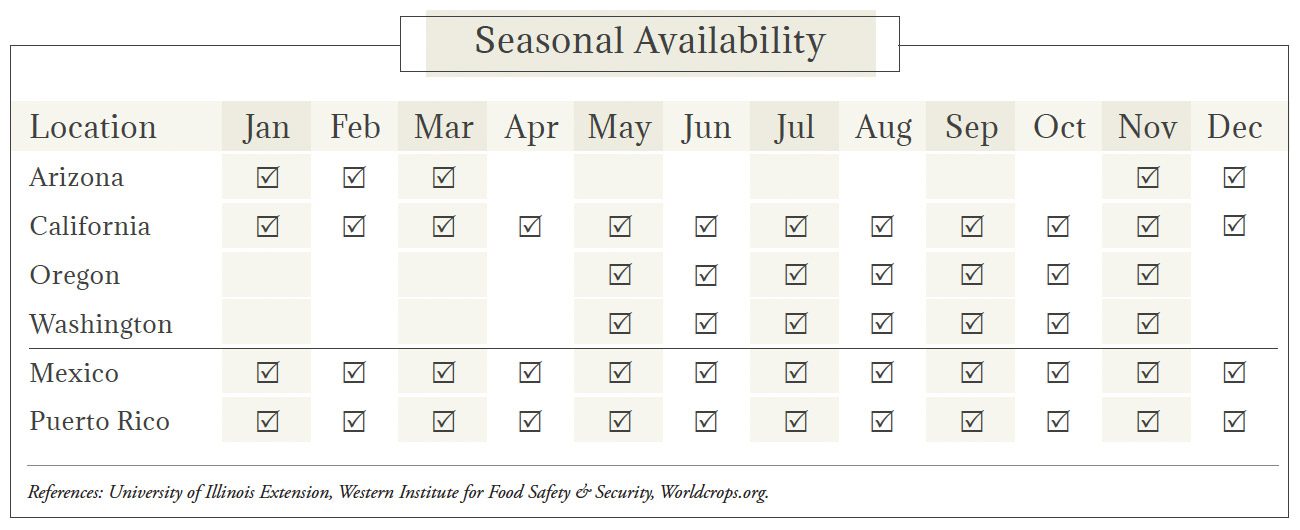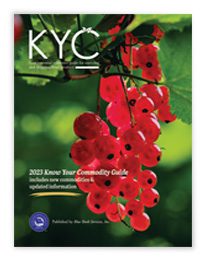Cilantro Market Summary


Image: Thu_Truong_VN/Shutterstock.com
Cilantro Market Overview
Cilantro (Coriandrum sativum), the fresh leaves of coriander, originated in southern Europe and Asia. The leafy herb was brought by Spanish conquistadors to Mexico in the 1500s and to the United States soon after. Sometimes referred to as Chinese or Mexican parsley, cilantro has become a staple in Mexican and Tex-Mex dishes, and is also commonly used in Asian cuisine.
Cilantro is a member of the Apiaceae family, including celery, cumin, carrots, and parsley. An annual, cilantro has a bold, citrusy taste and is used as an herb. The dried seeds of the same plant, coriander, are used as a spice and possess a distinctively different flavor.
While produced in nearly every country across the globe, the herb’s most significant growing regions are the United States and Mexico. The latter is the world’s top exporter; in the United States, California is the top producer followed distantly by Arizona, Oregon, and Washington.
Types & Varieties of Cilantro
There are numerous varieties of cilantro including Leisure, Slo Bolt, Caribe, California Long Standing, Jantar, Santos, Terra, Costa Rica, Lemon, Del?no, and Moroccan. Jantar and Santos are “bolt-resistant” varieties, which keep plants from ?owering due to overly warm temperatures.The Cultivation of Cilantro
While cilantro can be grown in a variety of climates, temperatures between 50 and 80°F are ideal. Plants can survive a minor frost, but not exposure to high temperatures.Cilantro is grown year-round in California where the largest harvests occur from March through mid-November. In Coachella Valley and Yuma, Arizona, it is harvested November through March, and in Oregon and Washington, it is grown from May through November.
Once germinated, seedlings need approximately one inch of water per week for optimal foliage growth and development. Furrows or drip tape will prevent overwatering and disease. Plants are usually ready for harvest 40 to 45 days after seeding.
Cilantro is most often harvested by hand. Field workers use a small, rounded knife to slice the plant at the ground, create tied bunches, and cut the bottom in a straight line. In some cases, cilantro destined for foodservice or processing is harvested mechanically. Much like other leafy greens, cilantro has a relatively high respiration rate. To maintain optimal postharvest quality, harvesting during cool temperatures (early in the morning or the evening) is best.
Pests & Diseases Affecting Cilantro
Beet armyworms are brown moth larvae that can destroy seedlings, consume leaves, and stunt growth by feeding on developing buds. Cabbage loopers are smooth-skinned green caterpillars; they can be distinguished from other caterpillars by their distinctive “looping” movement. These pests may strike cilantro at any time during the growing season. Early infestations may result in damage to the young leaves and terminal buds.The green peach aphid occurs throughout California, mostly in the spring and fall and can transmit more than 100 different viruses. Infestation can cause stunting, leaf curling, and twisting.
Bacterial leaf spot is a seedborne disease that causes dark, water-soaked spots on both the top and bottom sides of leaves. If severe, foliage can take on a blighted appearance as the spots merge. The disease progresses rapidly during wet weather and can cause signi?cant damage.
Apium virus Y results in spotted patterns and small distortions on leaves, stunting plants. The disease has been reported in California’s Central Coast region. Carrot motley dwarf a?ects both cilantro and parsley and is caused by a combination of carrot redleaf virus and carrot mottle virus. Plants infected in the seedling stage will be severely stunted and foliage may be yellow, orange, or red.
Storage & Packaging of Cilantro
After harvest, bunches should be stored in low-temperature, high humidity conditions. In California, fresh cilantro is cooled immediately when brought in from the ?eld and stored at 33 to 35°F until shipped.References: Herb Society of America, University of California,
University of Illinois Extension, USDA, Western Institute for Food Safety & Security, Worldcrops.org.
Grades & Good Arrival of Cilantro
There are currently no published U.S. good arrival guidelines for cilantro. Recommended transit temperature is 33 to 35°F; under these conditions, cilantro should have a shelf life of at least 14 days.Cilantro Retail Pricing: Coventional & Organic Per Bunch




